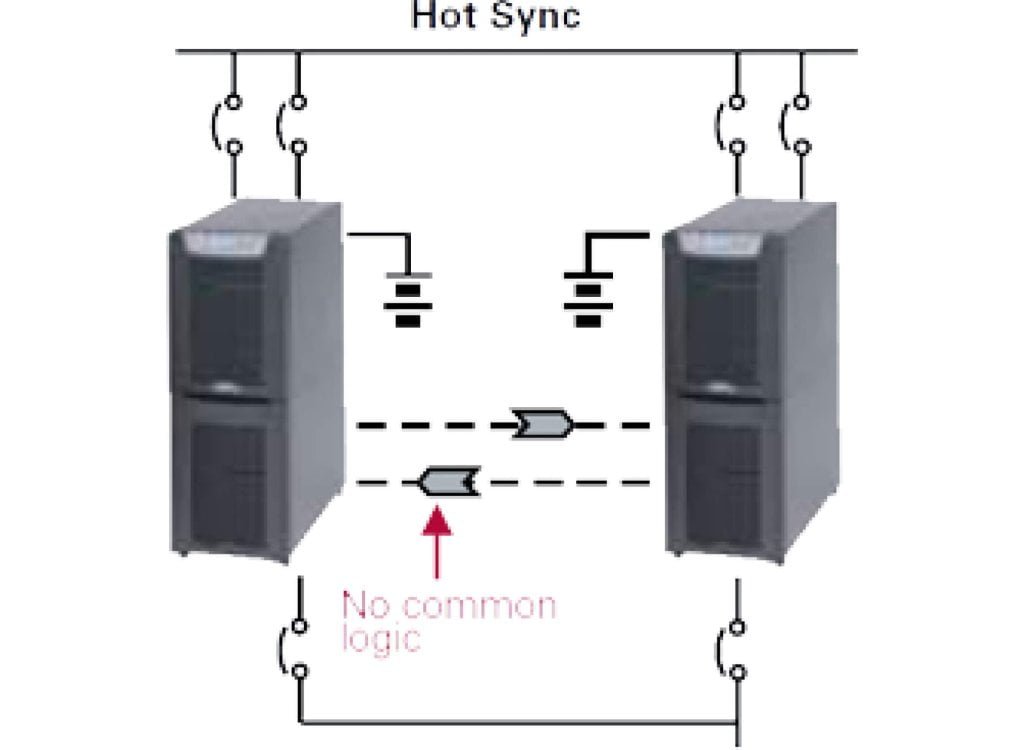The number one function of a UPS is to supply continuous conditioned, reliable electricity to a critical load. In case of a single unit, reliability can be increased by modular design, where redundant internal modules can take over each others’ tasks-, if one of the modules fails. To further increase reliability, a true parallel configuration can be employed, where two or more units share the load. A failed unit is isolated while the remaining ones continue to support the critical load. Competitive UPS products on the market utilise centralised or distributed load-sharing technology with the master-slave principle, which introduces a risk of single point failure. The absolute reliability of a UPS system can be achieved with patented Powerware Hot Sync® parallel load-sharing technology. Hot Sync technology is designed for parallel redundant N+1 systems to satisfy 24/7 applications. It can also be used in parallel capacity systems to benefit from scalability for customers’ everincreasing load demands. Hot Sync erases single point of failure, with an ability to synchronise and support critical loads independently of other UPS modules in the system. UPS modules can share loads without any communication wiring to the outside world..
Powerware Hot Sync Technology

Paralleling UPS technology
Powerware Hot Sync Technology
The secret here is a patented built-in digital signal processor (DSP) algorithm, running continuously in each unit. It drives the UPS outputs toward synchronisation and takes care of load sharing. If there is a common bypass available, it is used as valid synchronisation source for output. In the absence of a common bypass, the processor makes subtle adjustments to the inverter frequency on the basis of output power level measurement in order to find a common frequency and load balance among the units. There exists, as shown in image, a relationship between the power imbalance and the voltage phase difference.
User benefits :
- Available for both single- and three -phase products to meet any mission-critical need up to 2.5 MVA (400V) systems
- Easy and modular parallel UPS system upgrade with additional capacity or redundancy Erases single point of failure


